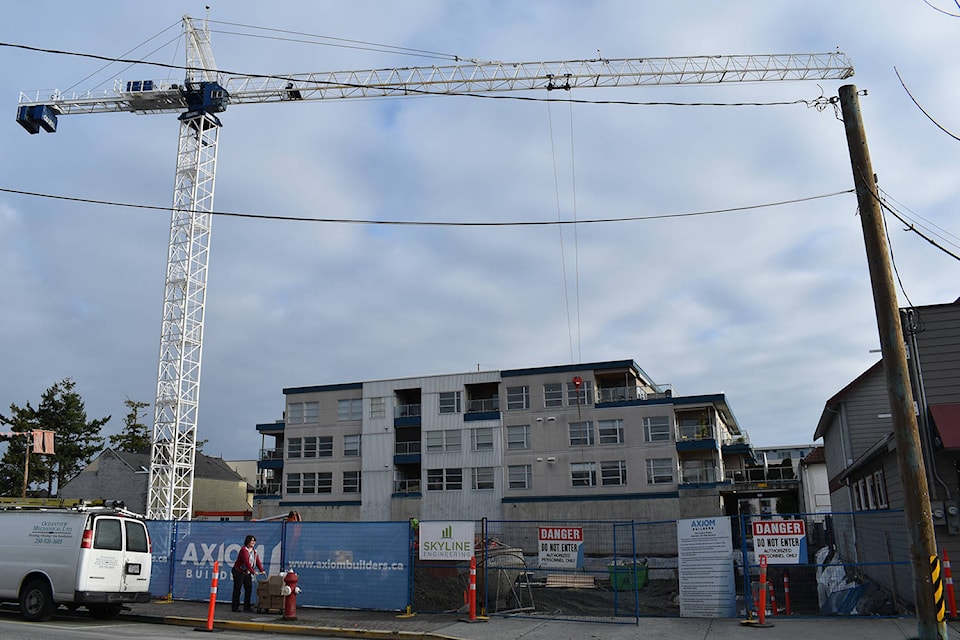New figures show housing starts are slowing in Greater Victoria, but at a high level, with analysts citing a number of factors.
Preliminary housing data from Canada Mortgage and Housing Corporation (CHMC) shows new construction starts in Greater Victoria dropped seven per cent between January and November 2019 compared to the same period in 2018. The drop happened across all types of buildings with starts for single family homes dropping 23 per cent, and a combined three per cent for all other types.
Braden Batch, senior analyst, economics with CHMC, warns against reading too much into this drop, because it is happening against the backdrop of record setting years in 2017 and 2018 not seen since the mid-to-late 1970s.
“It [3,242 new housing starts] is actually quite a lot of housing starts for Victoria, especially if you look at a longer time scale,” he said, adding later that Victoria has been seeing historically unprecedented housing starts. “Basically, it is down by the amount of one or two major projects. We can easily see a major project come on line in December and that would equalize it.”
RELATED: New buildings approved for old Sidney fire hall site
But Batch is not sure so this will happen. A CHMC forecast released earlier this year predicts that the number of big projects will “taper off” in the coming years because of larger changes.
The release of the new CHMC data coincided with the release of new figures from Statistics Canada that show the value of building permits issued by municipalities in the Victoria Census Metropolitan Area (CMA) dropped by almost 40 per cent in October 2019 to 68.7 million. Compared to the same period last year, the value of building permits dropped almost 29 per cent from 96.4 million.
This regional drop appears consistent with the provincial picture with the value of building permits dropping 21.2 across British Columbia, the largest anywhere in the country. By comparison, the national value of building permits dropped 1.5 per cent.
RELATED: Greater Victoria records drop in building permit values
But Batch warns against reading too much into those figures.
“We know that construction has to slow down a little bit,” he said.
For construction to grow on top of record setting rates, the region would need much stronger population growth, much stronger employment growth, said Batch.
“The fundamental factors are starting to pull back,” he said. “So we will expect construction to pull back as well.”
Looking around Greater Victoria and the rest of Vancouver Island, new housing starts were up 91 per cent in Victoria, down 57 per cent in Saanich, 75 per cent in Central Saanich, and down 23 per cent in Langford. That said, Langford still created 39 per cent of all new housing in the region with 1,254 units. Esquimalt, Colwood and Sidney have also recorded higher housing starts.
Casey Edge, executive director of the Victoria Residential Builders Association, said developers are becoming “more wary” in larger economic fundamentals, such as layoffs in the forestry industry. The provincial government has also driven up costs through various taxes including the speculation tax, he said.
“Municipal governments like Saanich and Central Saanich are increasing permit fees and building costs through Step Code, while obstructing market housing,” he said, adding that Saanich council voted to fast-track government funded projects, while pushing back market housing to the back of the line.
“Home building requires manageable risk,” he said. “Adding government costs and uncertainty increase risk and erode new housing. This concept seems to be lost on some municipal councils.”
Like us on Facebook and follow @wolfgang_depner
